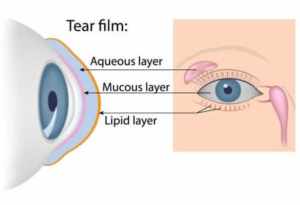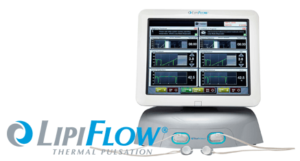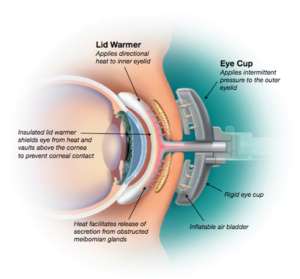Is LipiFlow a Good Treatment Option for My Dry Eyes?
Are your dry eyes getting in the way of doing the things you love? Dry eyes can make it harder to drive, work, read, watch TV, and enjoy the things you once did, significantly reducing your quality of life.
It can also affect your productivity and your ability to accomplish everyday tasks. Fortunately, help is available.
Different treatment options for dry eye can address your individual eye needs, such as LipiFlow, a highly-effective, in-office procedure. Keep reading to find out if LipiFlow is a good treatment option for your dry eyes!
What is Dry Eye Syndrome?
Although anyone can develop dry eye syndrome, it’s more common in women. There are various reasons why you may have dry eyes, including wearing contacts, allergies, your environment, and prolonged screen time.

When you have dry eyes, it’s usually due to one of two reasons. The first, you aren’t producing enough high-quality tears, or the second, the tears you produce are low-quality and do not have the sufficient nutrients necessary to nourish and lubricate your eyes.
Healthy tears must include water, mucus, and oil. Although all of these components are critical, if your tears don’t have enough oil, it will lead to symptoms of dry eye syndrome.
Oil is what keeps water and mucus from evaporating from the surface of the eye. But without adequate oil, tears evaporate faster, causing your eyes to feel dry, gritty, and irritated.
Symptoms of Dry Eye Syndrome
If you have dry eyes, they can be quite uncomfortable and may worsen in intensity as the day goes on. Some of the symptoms of dry eye are:

- Blurred vision
- Sensitivity to light
- Red eyes
- Burning or stinging in the eyes
- Itchy eyes
- Eye fatigue
- Inability to wear contact lenses
- Eye pain
Patients with dry eye syndrome may experience some of these symptoms or only one of them. For treatment to be effective, it’s imperative to understand the root cause of what’s causing your dry eyes. One of the leading causes of dry eye is Meibomian Gland Dysfunction (MGD).
What is Meibomian Gland Dysfunction?
Meibomian Gland Dysfunction occurs when the tiny meibomian glands found in your eyelids become blocked. These glands secrete an oil known as meibum, which offers a protective layer around your tears.
The oily layer prevents your tears from evaporating more rapidly than your eyes can produce them. Without adequate oil due to MGD, your tears tend to evaporate faster than they should.
As a result, this leads to symptoms like eye inflammation and irritation. Left untreated, MGD only gets worse and leaves your eyes feeling drier and more irritated.
What is LipiFlow?

LipiFlow is an FDA-approved procedure for patients who suffer from dry eyes and Meibomian Gland Dysfunction. During treatment, your Eye Consultants of North Dakota ophthalmologist or optometrist will carefully place activators over and under the eyelids while avoiding the core of your eye.
After the disposable activators are correctly placed, the LipiFlow device will send both pressure and heat to your inner lids while also producing gentle movement on your outer eyelids. The combination of movement, pressure, and heat removes the buildup on the meibomian glands while removing residue that can accumulate with time.
Removing this residue helps restore function to the obstructed glands, enabling them to release the oils needed to keep your tears protected and your eyes healthy. Undergoing a LipiFlow treatment takes 15 minutes to complete.
Optimal outcomes are typically reached at 6 to 8 weeks after the procedure. If you have MGD, your dry eye can be chronic.
If this is the case, your eye doctor may recommend you have annual LipiFlow treatments. Having LipiFlow once a year ensures the meibomian glands remain functional and prevent the condition from progressing any further.
Who Is A Good Candidate for LipiFlow?
To see whether you qualify for LipiFlow treatment, your eye doctor will check your meibomian gland openings. Your ophthalmologist can also apply slight pressure to the lids to confirm if any oil comes out from the gland openings.
We’ll use a special camera to image your meibomian glands. Additional tests include evaluating the rate of tear evaporation and measuring the amount and quality of meibomian gland oil.
You may not qualify as a candidate for LipiFlow if any of the following apply:
- You’ve had herpes of the eye within the last three months
- You suffer from severe ptosis
- You have eyelid abnormalities
- You currently have an eye injury
- You have chronic eye inflammation
- You’ve recently had eye surgery

Remember that LipiFlow activators might not fit all eye sizes and shapes. If you do not qualify for LipiFlow, another dry eye treatment may be a better solution.
Quick, Painless, and Safe Procedure
Lipiflow treatment takes 15 minutes for each eye. It’s also FDA-approved, so you can rest assured the procedure is effective and safe for treating MGD and dry eye. LipiFlow is virtually painless, and most patients even find the massaging and warm sensations quite relaxing.
Long-Lasting Relief
The results of a single LipiFlow treatment can last for 6 to 12 months. Many patients find that after having LipiFlow, their dry eye symptoms significantly improve.
No Downtime
After having LipiFlow, you don’t have to worry about downtime or a lengthy recovery period. You can resume your usual activities right after the procedure is done.
Your eye doctor and team will review the post-procedure instructions with you to be sure the procedure works as well as it can and that the effects are longer lasting.
Best Treatment for Your Dry Eyes
If you have dry eyes and are looking for a treatment option to help improve symptoms of Meibomian Gland Dysfunction, LipiFlow may be the solution you’ve been looking for.
Find out if LipiFlow could be right for you by scheduling an appointment with the eye doctors at Eye Consultants of North Dakota in Fargo, ND, now!



